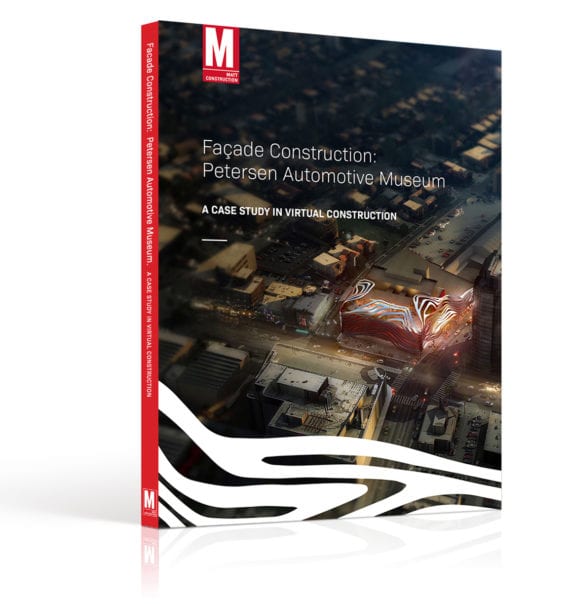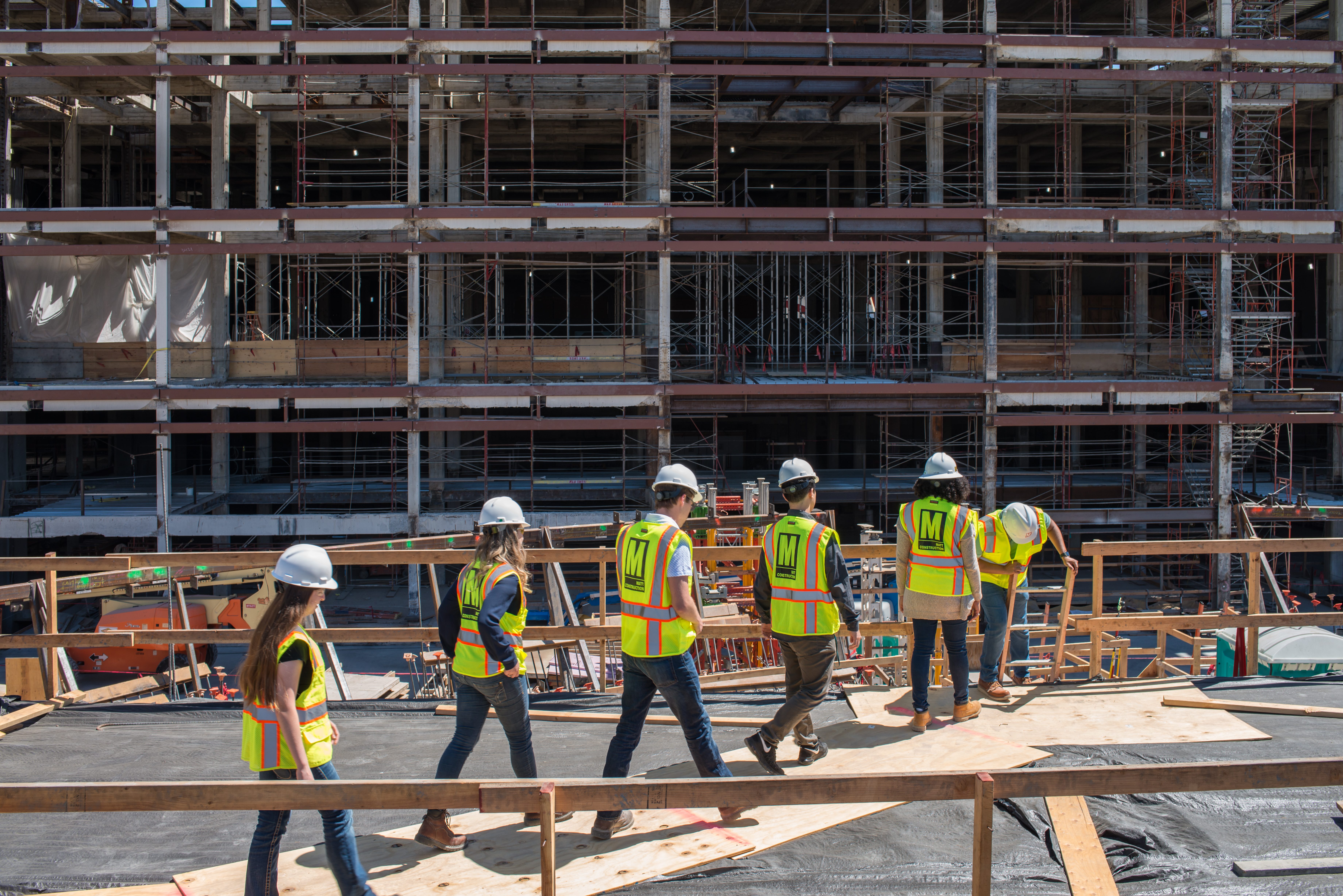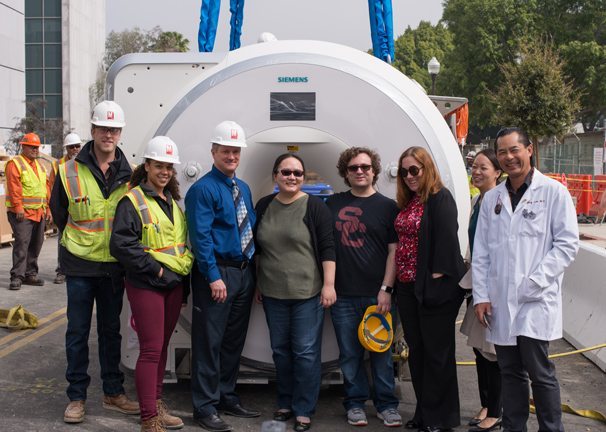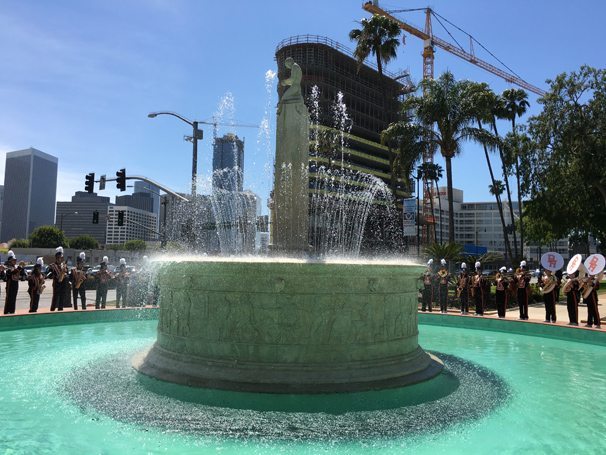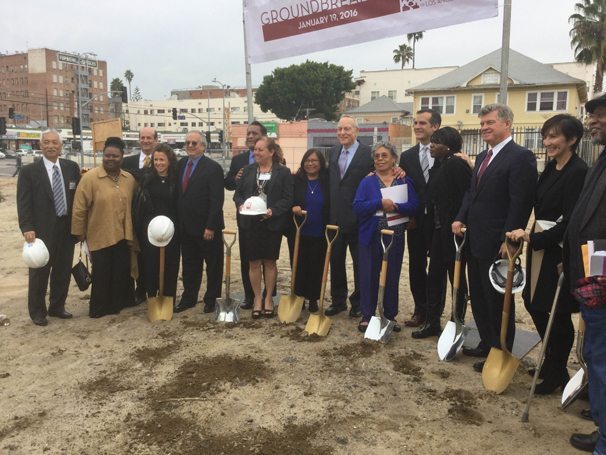
Lena Bigelow with her team
Working @ MATT: PM Edition
MATT Construction Project Managers Share Their Stories
Every jobsite demands a distinct set of duties and challenges from its operations team, which makes being a Project Manager (PM) a study in versatility. Large-scale residential undertakings that leverage the latest Building Information Technology to execute complex designs require a different management approach from renovating the wing of a museum MATT has collaborated fruitfully with for many years. Similarly, using a design-build delivery approach to create a pioneering robotics laboratory presents its own set of shifting dynamics and hurdles. While their way of running things may vary, what effective PMs have in common is their understanding of an individual project’s needs and their ability to oversee a diverse cast of characters in fulfilling those needs.
Lena Bigelow, Eric Rogers, Sacha Heikkila and Sean Jordan share their reflections on what it takes to make it to the PM level at MATT Construction. Lena has been with MATT for seven years, but her love of the industry began as a young girl, when she overheard her father explaining his day-to-day work as a construction manager. Eric joined the MATT family six months ago, transitioning from a job in the Windy City after admiring some of MATT’s most iconic projects while driving along the Wilshire corridor. Like Lena, Sacha grew up with inside intel on construction through her father and joined MATT 10 years ago as an intern. Sean followed a similar path to Sacha, interning with MATT eight years ago and quickly recognizing that the culture and portfolio matched his passion for problem-solving on an ambitious scale.

Eric Rogers
Scaling the Mountain: Becoming a Project Manager @ MATT
Years of field experience teach MATT’s operations team members more than any manual ever could as they rise from being interns, to PEs (project engineers), to Senior PEs, to Assistant PMs, to PMs. Lena believes that the road to becoming a PM doesn’t come with a specific guidebook; it’s something you develop a skill set and intuition for as you go. “If you learn the tools to approach any problem, the process of solving each problem is very similar. You have to be very wise, very intelligent in your thought process. Can you give a class on being a PM? No. Not everyone’s the same, not every job is the same. You learn from experience.”
Eric’s reflections on his own years of development echo the importance of diverse experience as training in itself. “I had to learn every trade, be involved in every meeting, know everything that was going on with the project financially and contractually.” Oftentimes, he stepped up as a PM before even attaining that title, working directly for the project executive. From day one, he witnessed where things could go wrong and how to run operations smoothly.
Sacha also benefited from shouldering a high level of responsibility early on: “My first job as a PE got reduced down in size, with only two of us on site,” she recalls. “We dealt with everything together.” This unexpected trial-by-fire helped her to cultivate a strong set of managerial skills and comprehensive grasp of what it takes to oversee both the nitty gritty and the large-scale tasks of any given project. Sean comments on his own, similar progression at work: “As I was moving up the ladder, getting new projects, my responsibility would always increase, and so would my learning curve. I’d adjust to the tasks, and as soon as it started to become easy, MATT gave me more responsibility.”
After time as a PE and SPE, Lena actively sought out the next stage: “I asked to be a PM. I went out and got it and said I want it.” From spending these crucial years evolving into a leader, Lena believes that “success comes from within; if you’re determined that you’re going to figure it out, work hard, and make it happen, then you do. If you don’t know how to do something, you get on the phone, you use your resources, you look it up. You don’t stop until you figure it out.”
Sean echoes Lena’s attitude towards self-betterment: “If you buy in and educate yourself outside work and invest in your career, MATT will reward you the entire way. It really comes down to how much a PE wants to learn, if they want to be out trekking in the field, going up and down the building site, being thoughtful, writing down lessons. People who do really well have processed all the lessons from their first project, eager to hit their second project running. A lot of great project engineers hit their stride in their second or third project, because they take the time to be thoughtful about what they’re learning and they’re learning a lot. That’s what it takes to be successful.”
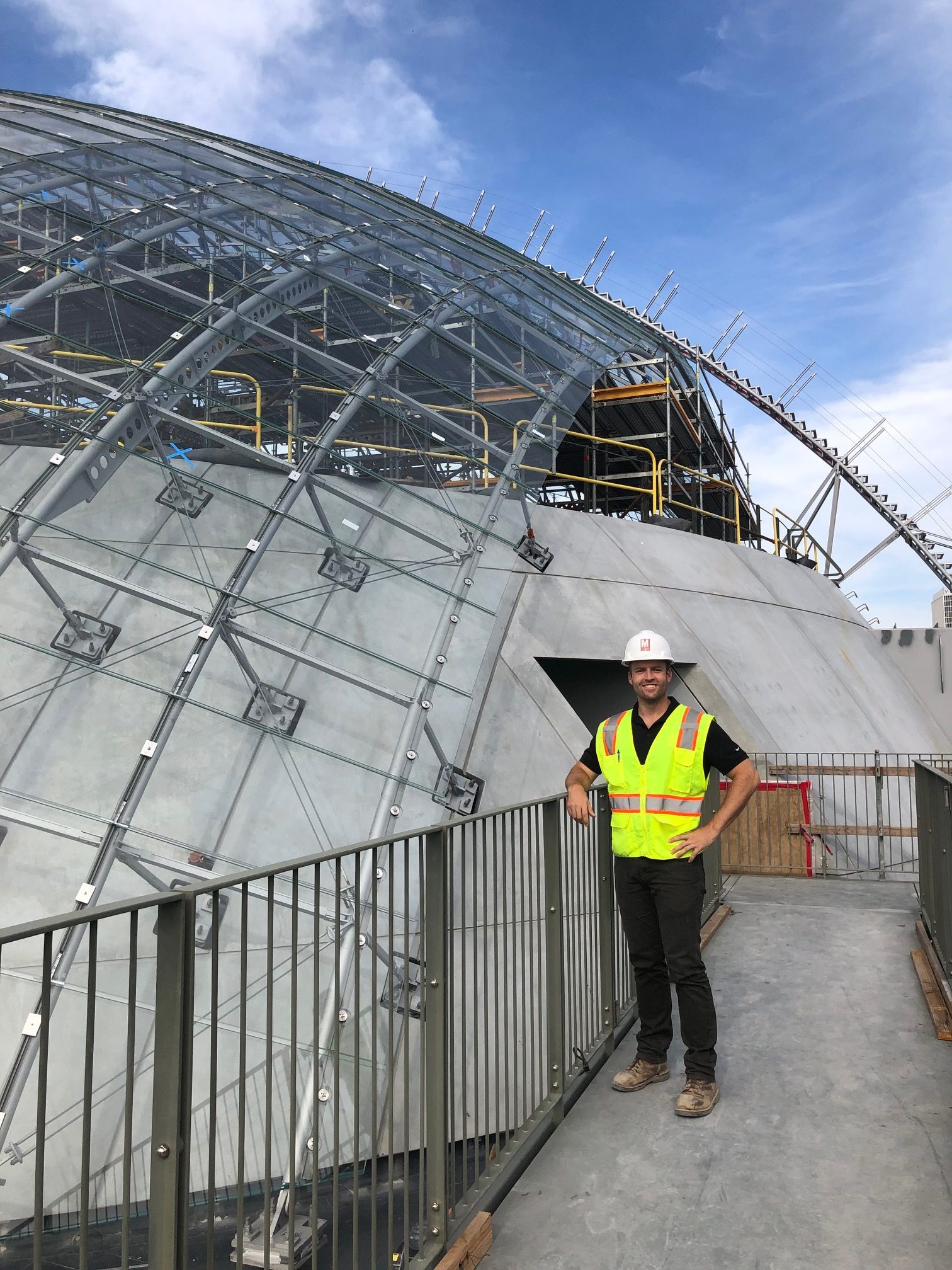
Sean Jordan
Stepping into Responsibility: Life as a PM @ MATT
Part of the challenge new PMs face, Lena notes, is the transition into the role of a decision-maker. Becoming a PM “was the first time where all the decisions were really mine and the superintendent’s to make together, as opposed to me working under a PM or SPM.” Although VPs also weigh in regularly, when it comes to the hundreds of decisions that happen every day, “everyone in the trailer would look at me and my super to make decisions together.”
To Sacha, evolving from an APM into a PM means “taking full responsibility, from the buyout all the way through to cost management. A lot of times, you’re given GMP or can phase, but as a PM you have to come up with it in the beginning and stick to it all the way through.” Sean shares this sense of increasing responsibility with increasing authority: “Taking a leadership role on a team is more than executing items; it’s making sure everything is moving. It was a natural transition, moving from owning my portion of the scope and taking responsibility for anything that happens with it, to the same duties on a bigger scale.”

Entering the role of project management has signaled a radical shift in Lena’s priorities. “The thing that means the most to me is what I’ve learned about myself since I’ve become a PM. From Project Engineer to Assistant Project Manager, I was constantly focusing on my own personal growth and development in an effort to continue to get promoted and move up the ladder with the ultimate goal of becoming a PM, which is my dream job. Since reaching my goal, my entire focus has shifted toward my team. I no longer get the same self-satisfaction from personal success. I now feel accomplishment and true happiness when I help guide my team members so that they can reach their goals and have their own success.”
Eric started out as a structural engineer with a background in civil engineering and spent four years working on development from that angle. But he always appreciated the operations side and enjoyed being on the jobsite. “As a designer, you work solo in your office, running calculations. Once the design stage is over, your interaction with an actual construction project is minimal and mostly related to resolving unforeseen on-site issues. I missed out on the fun and enjoyment of construction.” Being on the jobsite now as a PM and working with multiple trades, owners, municipal representatives and other MATT team members, “you get to see everything, whether it’s an empty lot or a dilapidated old building. It’s like planting seeds in the ground: a tree springs forth. That’s what we do in construction. We take something that was nothing or was dead and make it live again.”

Collaborative Leadership: PMs & the Larger Team @ MATT
When you’re coordinating dozens of moving parts, collaboration is king, both in the field and at headquarters. Sean has always loved team sports, with a background in competitive water polo, swimming and soccer. He sees construction as “a huge effort by large teams to solve problems and keep things moving. It’s a big race, and the better you are at looking ahead and solving problems, the faster the project goes.”
Lena finds the PM’s jobsite relationship with her superintendent mission-critical for any project. “It’s like a healthy marriage. You’re running the project together, but you have different roles and responsibilities. The super’s main focus is schedule, and my main focus should be the budget. But they go hand in hand, so we compromise and also have each other’s back.” She also recognizes how crucial it is to factor in the superintendent’s breadth of experience and anticipate needs before they’re stated: “We build stuff, and they’re the best builders on the site.”
Eric enjoys both the jobsite and office work cultures. As a PM, he works closely with MATT’s core team of estimators, which feels “like a small family.” Senior Vice President and Chief Estimator Hakim Khalil “gives great oversight to the team. You can feel the wisdom coming from him. He’s been through it.” Eric finds it impressive that “we can take very early-stage designs or napkin sketches of complex structures and come up with a highly accurate budget for them.”
Sacha appreciates the collaborative atmosphere at MATT and the team-wide problem-solving it fosters, an essential aspect of any job and one that an effective PM should recognize. “A lot of really great teams and people work for MATT.” Construction is high-stakes and high-pressure, and in the field “you can see a lot of people pointing fingers and screaming, but not in this environment. At MATT, everyone wants success — the subs, the owner, us. Teamwork helps put our work into perspective and drives us toward solutions.”
Eric is also inspired by the way MATT’s most senior staff operates and the example they set for others on the management track. “The passion that emanates from Steve Matt [Co-founder, Chairman and CEO] is very noticeable and contagious. It’s just refreshing to see he’s not locked up in a corner office with the door closed and the blinds shut. He’s out and about, asking questions. He knows something about every project, and he cares. You can feel it and see it.”

Words of Wisdom: Being an Effective PM @ MATT
When asked what advice she would share with PM hopefuls, Lena reflects, “I think not only coming in under budget and on time, but having a happy team should be your main goals. It doesn’t matter what we’re building. It matters who’s on the team. We learn from each other, we become better people. Everyone’s equal.”
Sacha encourages potential PMs to “spend as much time in the field as possible. Ask questions, use team members, make sure you understand how something is built and going together.” As an effective PM for MATT, “you should know the building better than your own subs, owners and architects do.” When running into construction obstacles, Sean reminds himself “that the Romans had running water. If we can’t figure out a plumbing problem, just look around. If you ever think a problem is overwhelming, know that someone else has probably already solved it.”

Eric urges future PMs to “be organized, be detail-oriented. Have strong communication skills. You have to be able to communicate equally clearly with subs who spend most of their lives in the field working with their hands as with world-renowned architects” who live in the realm of visions and schematics. Equally important, however, Eric believes that a strong PM should “be the calm in the storm. Have a level-headed temperament. When everybody is frustrated or ready to give up because of a roadblock, and people above and below are looking at you because you’re the PM, keep it together. It’s up to you to lead the team and put out the fire or climb out of the hole. Just remain calm, pick up the pieces, and keep the team together.”
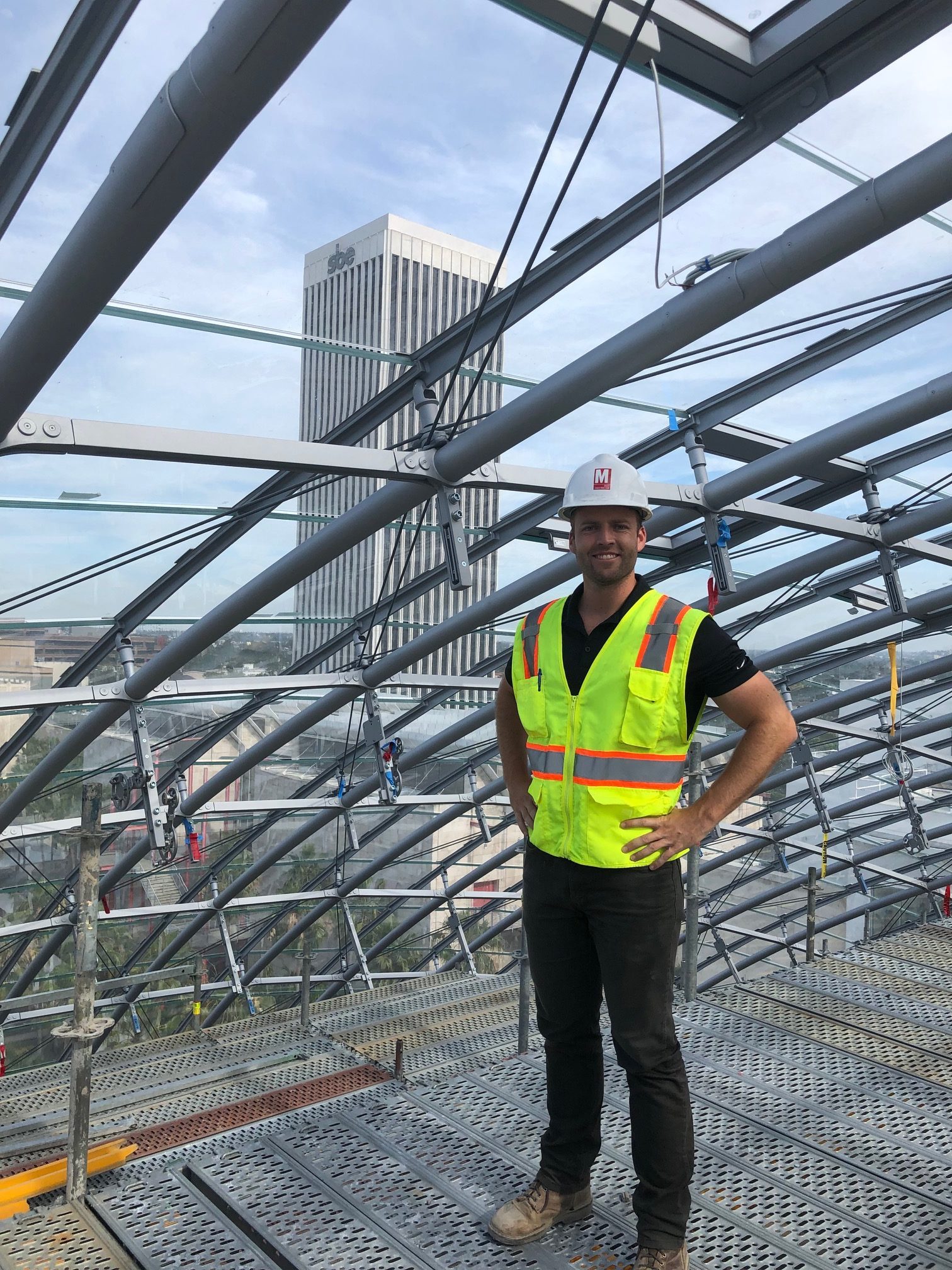
Sean offers to young employees, “education doesn’t end in college. If you’re waiting for experience to teach you how to be a good manager, you’re already several steps behind. But if you read books and learn a lot, it won’t feel scary when you have people under you depending on you, people you’re responsible for growing and making into problem-solvers.” Sean also believes a PM should “set clear expectations” when cultivating the crop of interns, PEs, SPEs and APMs working for him. “Think about their progression. Don’t always give them the answers. If you let them solve problems, they’ll develop that skill, and you can then rely on them to solve future problems without you while you focus on other problems.”
Lena’s closing sentiment rings true for the entire operations side of the MATT family: “My favorite thing about MATT is building. I love building and learning how to build, so for me the fun part is going outside and seeing what we’ve been working hard on come to life. I walk the jobsite and try to learn from all the team members outside who actually build a structure with their hands. That’s why I do what I do.” To future PMs, she shares, “Every single day is something new for me, and I have to figure it out. You’re never going to know it all. If you’re ready to lead a team, and you’re confident in yourself, go for it.”



